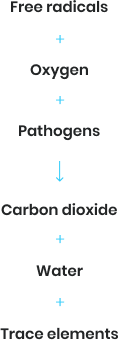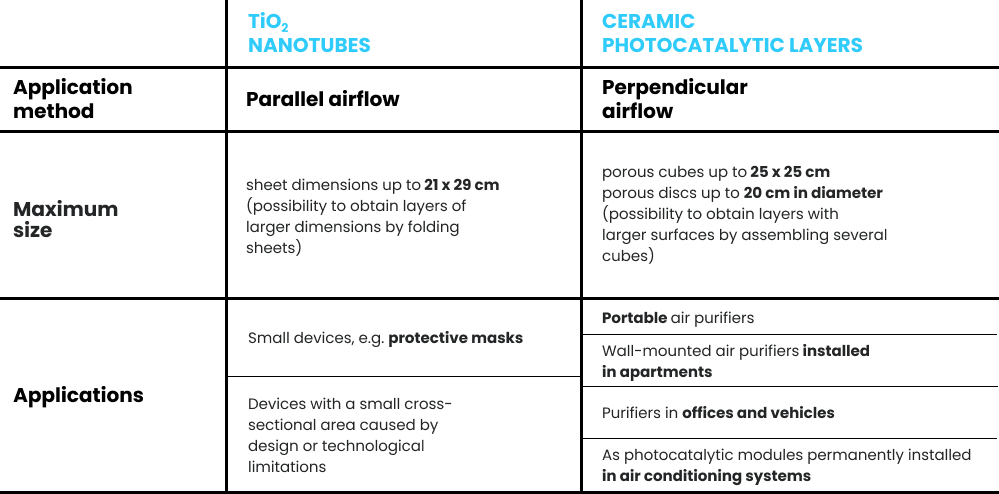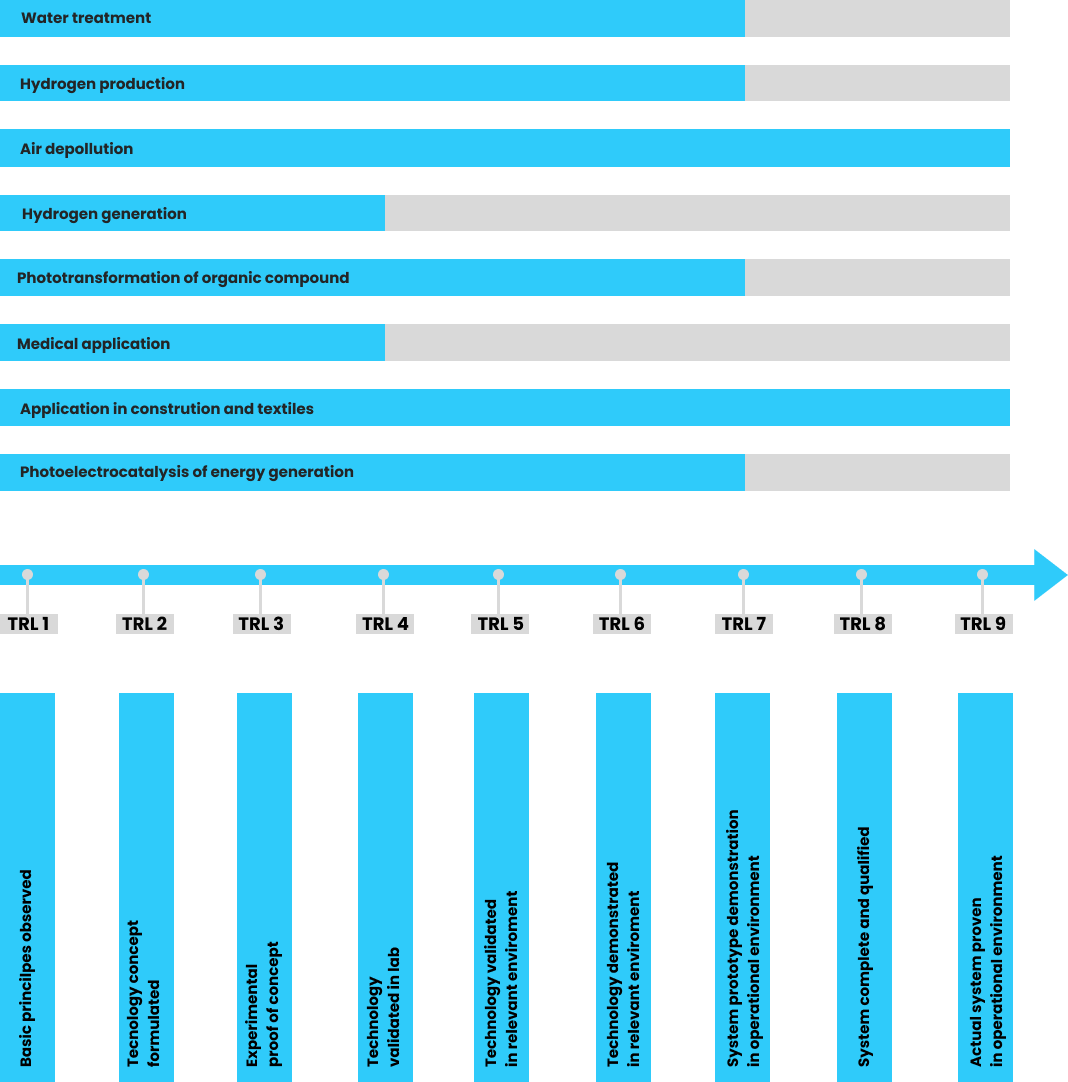Photocatalytic technology
designed by Nanosci, proven by science.
designed by Nanosci, proven by science.
Our technology has been developed and improved by scientists from the University of Gdańsk. See how the photocatalytic air purification process looks like.


are irradiated with appropriate energy (e.g. titanium dioxide by UV light)
react with surrounding oxygen and air humidity forming reactive oxygen species, including strong hydroxyl radicals
such as organic pollutants, causing them to mineralize, forming carbon dioxide, water, and finally simple inorganic compounds containing heteroatoms
can be converted to HNO3 or N2 respectively, while sulfur oxide (SO2) can be oxidised to sulfates
can be converted to HNO3 or N2 respectively, while sulfur oxide (SO2) can be oxidised to sulfates


Titanium material covered with photocatalytic nanotubes. Used for air purification of volatile organic and inorganic compounds, and microorganisms.
Photocatalytic reactor used for continuous hydrogen production. The invention also comprises hydrogen production method using a flow photocatalytic reactor.

Our photocatalytic layers can be used in various air-purifying structures. Layers are developed and manufactured by Nanosci.
Titanium dioxide (TiO2) nanotubes are formed directly on the carrier material (a sheet of titanium foil). Nanotubes dimensions (length, diameter, and wall thickness) can be precisely regulated by the synthesis parameters, which affect their photocatalytic activity. Shaped titanium pieces covered with TiO2 nanotubes could be easily incorporated as a photocatalytic layer in a photocatalytic engine. The manufacturing method of a thin layer of oriented TiO2 nanotubes has been patent-pending.
Made of a porous ceramic structure evenly covered with titanium dioxide (TiO2) nanoparticles. Porous photocatalytic layers can vary in size (including shape and thickness) and porosity depending on customer needs and potential applications. Manufacturing of porous photocatalytic materials on a semi-industrial scale has been patent-pending.
Paste with photocatalytic properties designed for air purification from volatile organic and inorganic compounds, microorganisms, especially toluene, formaldehyde, NOx, SO2, and Pseudomonas aeruginosa bacteria.

At Nanosci, we have developed and patented a complete and scalable air purification technology. Our team is involved in research on water purification. We expect to be ready to commercialize the photocatalytic water purifier within two years. We are working on the application of our technology to the production of hydrogen.
